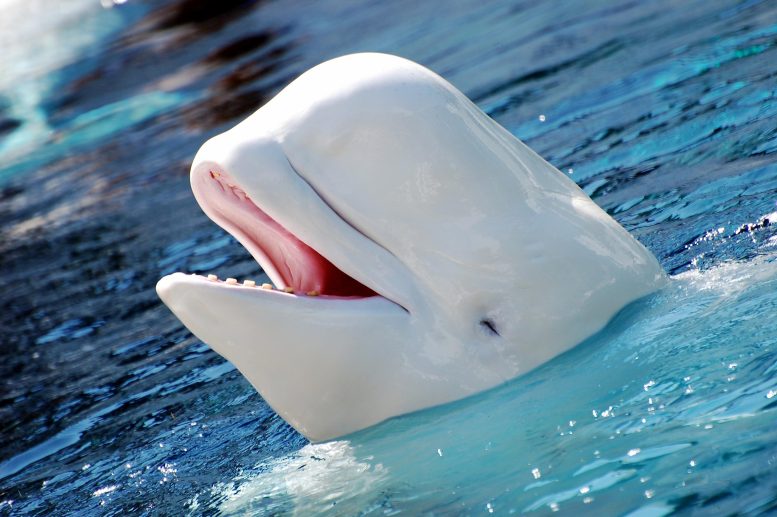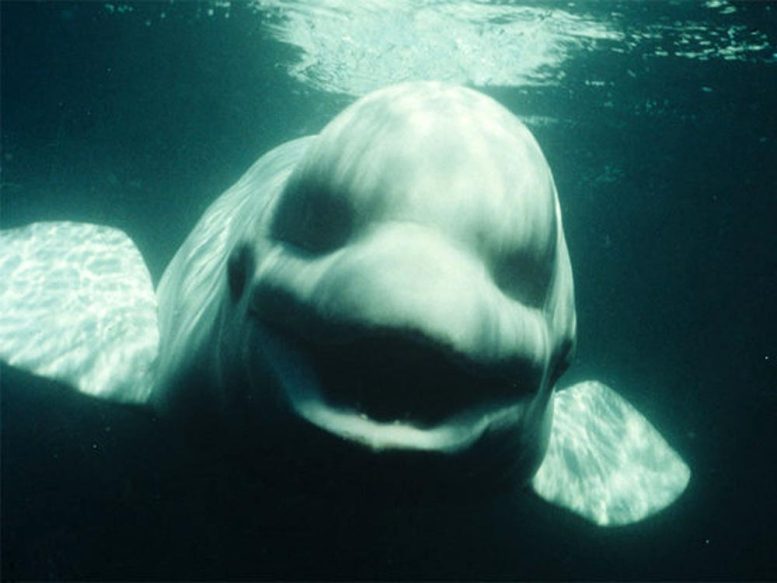When a beluga’s caretakers heard noises that sounded like garbled phrases emanating from its enclosure, they realized that the whale might be imitating the voices of its human handlers. The outbursts, originally described at a conference in 1985, began in 1984 and lasted for four years until the whale named NOC hit its sexual maturity.
The scientists published their findings in the journal Current Biology. NOC learned to imitate humans by listening to them speak underwater and on the surface. There are some animals, like songbirds and various marine mammals, that learn to imitate the songs and sounds of others. This wasn’t the first observation of vocal mimicry in whales. Since the 1940s, scientists have heard belugas (Delphinapterus leucas) making sounds that were akin to children shouting in the distance.
NOC’s human calls were several octaves lower than normal whale calls and NOC was trained to “speak” on command. The researchers believed he did this by increasing the pressure of the air that flows through his naval cavities, resulting in modified sounds produced by manipulating the shape of his phonic lips.
The vocal learning stems from NOC’s close association with humans. Belugas have a wide range of vocal calls. Scientists have studied vocal learning in killer whales as well, but they produce a more limited range of sounds which rarely stray from the calls of their groups. Sadly, NOC died several years ago.
Reference: “Spontaneous human speech mimicry by a cetacean” by Sam Ridgway, Donald Carder, Michelle Jeffries and Mark Todd, 23 October 2012, Current Biology.
DOI: 10.1016/j.cub.2012.08.044











Be the first to comment on "Captive Beluga Whale Was Able to Mimic Speech"